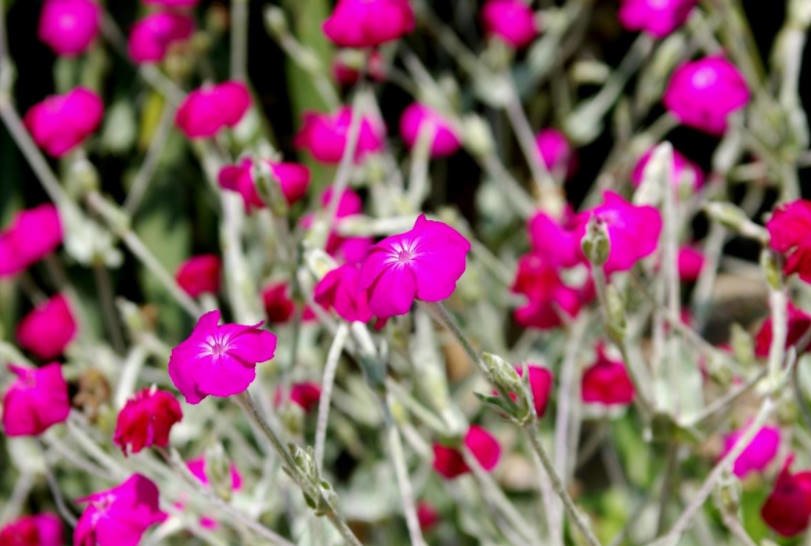
- How to achieve flowering in the near future;
- Aquilegia x hybrida;
- Vinca minor;
- Galanthus plicatus;
- Hyacinthus albulus;
- Delphinium belladona;
- Iridodictyum reticulata;
- Ipheion uniflorum;
- Centranthus ruber;
- Lemonium perezii;
- Lychnis coronaria;
- Lobelia speciosa;
- Helleborus caucasicus;
- Euphorbia rigida;
- Leucanthemum maximum;
- Pagoda barbatus;
- Arabis caucasica;
- Viola odorata;
- How to grow Express perennials;
Express perennials include such flower crops (types, forms, varieties) that bloom faster than usual, often in the first year of life.
Most of them are herbaceous species, but there are also woody species that bloom very early, among them:
- Chaenomeles japonica
- Forsythia
- Jasminum nudiflorum
- Cornus mas
- Camellia japonica
- Chimonanthus praecox
- Erica carnea
- Viburnum tinus
- Lonicera fragrantissima
- Mahonia bealei
- Amygdalus communis
- Armeniaca mume
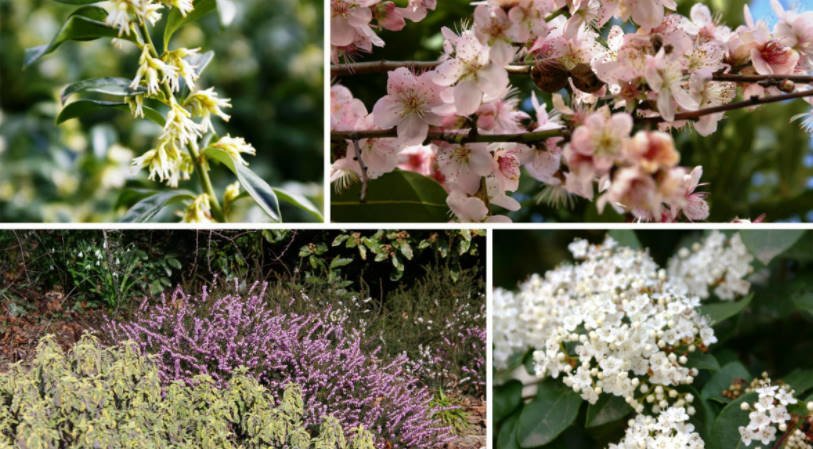
One plant is given by nature:
- Vinca
- Galanthus plicatus
- Primula and others.
But many can be made to bloom soon.

Galanthus folded is in no hurry to bloom
Before proceeding to the expression of perennials, let me remind you how to achieve earlier flowering (we are not talking about forcing bulbs).
How to achieve flowering in the near future
It is known that the optimal period for sowing most perennials is from the end of April to the beginning of June. During this time, they have time to develop well and prepare for winter. With early sowing in February-March, the plants begin to bloom by the end of summer and cannot overwinter, so in the first year of life, the buds are often removed. However, breeders are not asleep and, selecting early-flowering specimens, have created many varieties of perennials that begin to bloom (and without any harm to themselves) in the year of sowing.
So, we will consider 17 express perennials, some of which will bloom early on their own, but others will have to be “hurried”.
Aquilegia x hybrida
Aquilegia x hybrida series “Cameo” from the Ranunculaceae family.
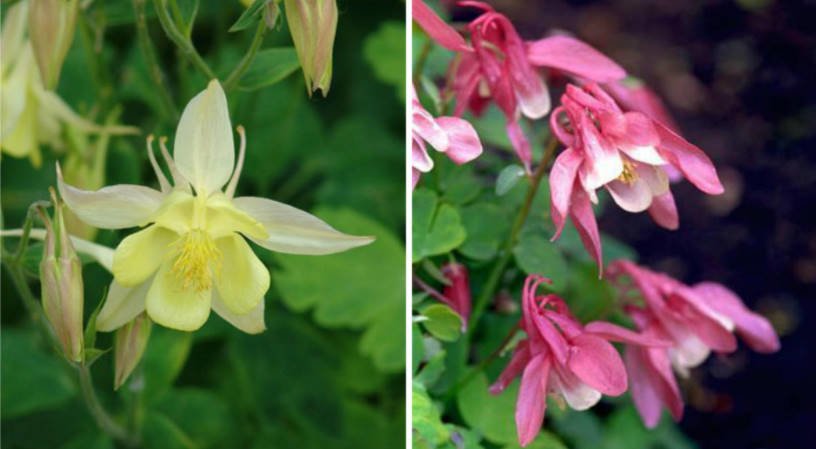
Aquilegia ‘Cameo’
The bushes are compact, up to 15 cm (5.9 in) high. The flowers are pink, white, red, blue. Such a catchment can be planted even in containers. With surface sowing for seedlings in late February-early March (at a temperature of +18…+21°C/64.4-69.8°F) bloom: in the middle zone – in the second half of summer, in the south – in May.
Vinca minor
Vinca Minor from the Capuchin family is a real “upstart” by nature.
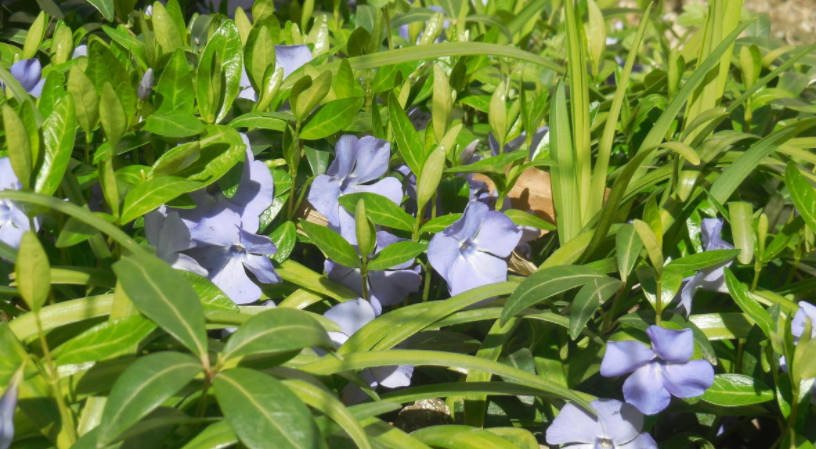
Vinca minor
In the middle zone, it begins to bloom in May. It is propagated in the spring by division. It is especially effective in semi-shaded places: trunk circles, rockeries.
Galanthus plicatus
Galanthus plicatus from the Amaryllis family in some years (with a warm winter) begins to bloom in January.

Galanthus plicatus
In nature, it is strictly forbidden to tear its flowers and dig up bulbs. The appearance of rolled galanthus bulbs in trade catalogs indicates that it is propagated in nurseries. And only the purchase of bulbs will give you a “gentle” rapid flowering in early spring; from seeds, a folded snowdrop blooms for 4-5 years.
Hyacinthus albulus
Hyacinth albulus from the Hyacinth / Lily family, which is often called the Roman or Parisian hyacinth, differs in smaller flowers than varieties of Hyacinth Oriental (H. orientalis).
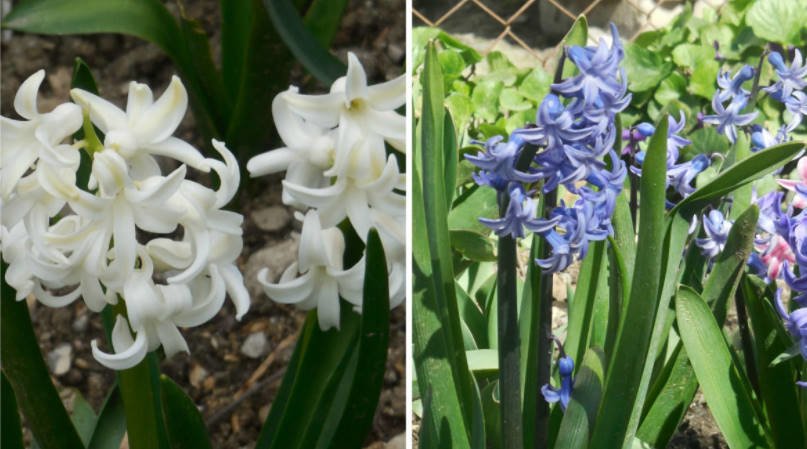
Hyacinthus albulus
One bulb produces several loose inflorescences of predominantly white, less often light blue, blue color. It is not necessary to dig them out every year, these hyacinths have been living and blooming in one place for years.
Delphinium belladona
Delphinium belladonna ‘Casablanca’ from the Ranunculaceae family in February, blooms in July.
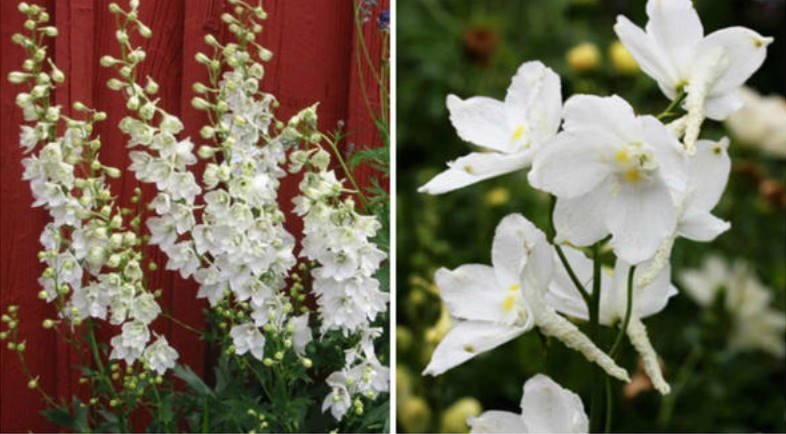
Delphinium belladonna appearance
Perennial delphiniums have especially many express classes (first of all, numerous varieties of Delphinium hybridum x, but it should be remembered that they do not like heavy and waterlogged soil; such conditions arise in winter; due to poor development, they are short-lived. On well-drained fertile loose soils, on the contrary – they give such magnificent peduncles that they lie during heavy rains, therefore they require the installation of supports and garters.
Iridodictyum reticulata
Iridodictyum reticulate from the Iris family in the middle band blooms in April.
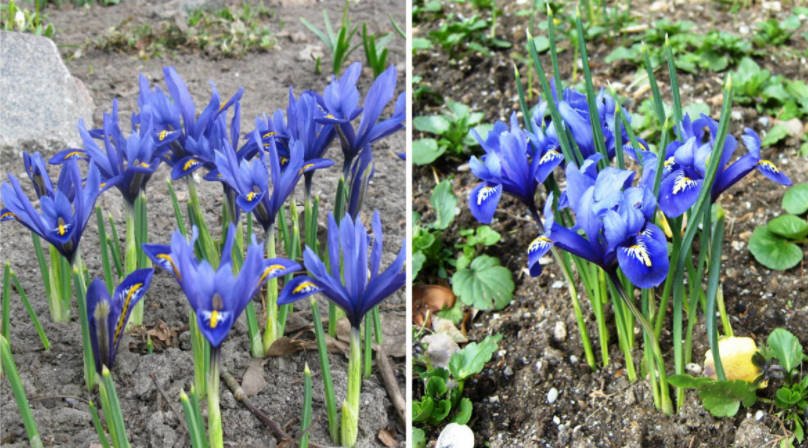
Iridodictyum reticulata
This is onion iris, and only high-quality planting material will give rapid flowering in spring. It manifests itself better in full sun with fertile well-drained soil. It does not tolerate waterlogging, but is tolerant of blackening; in one place it pleases with flowering for many years.
Ipheion uniflorum
The Iphaeon is one-color, blue. Tristagma uniflorum – small-leaved “upstarts” from the onion family (Alliaceae).
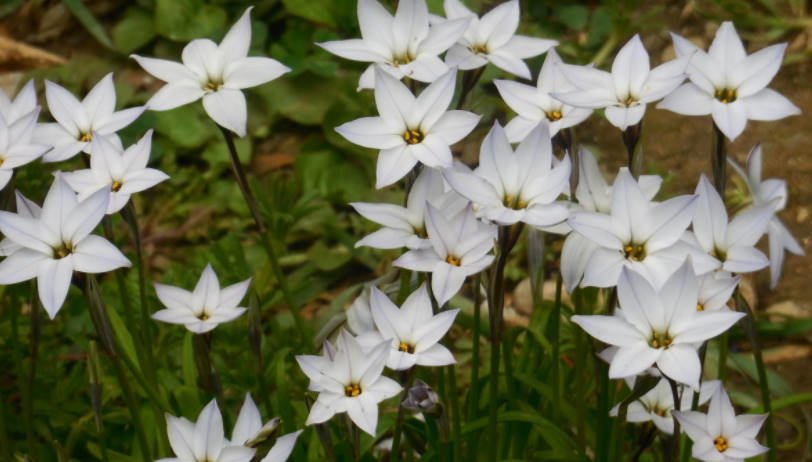
Ipheion uniflorum
Its star-shaped flowers bloom in March. With the autumn planting of large bulbs, flowering occurs in the spring of the following year. The only “but”: Ipheion uniflorum is a Southerner, -5 °C (23°F) is the beginning of its wintering.
Centranthus ruber
Centrantus ruber Valerian, a medium–sized family that successfully attracts the Southern Garden.
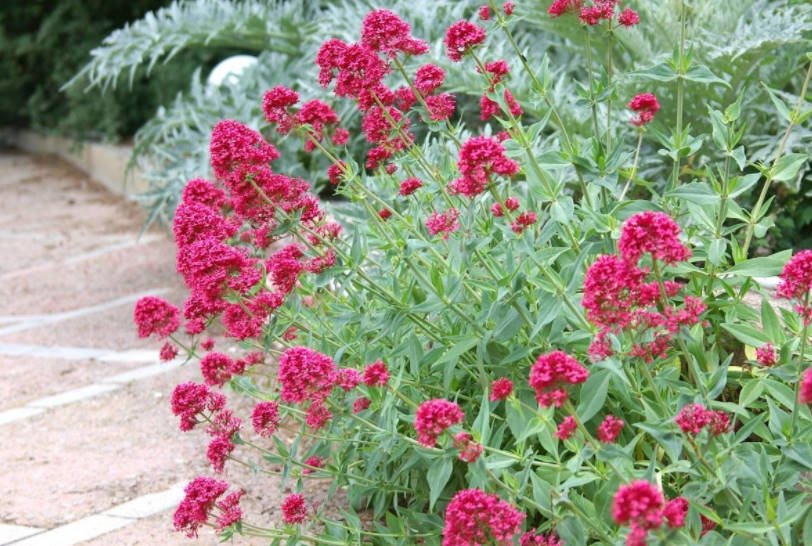
Centranthus ruber
When sowing seeds in March-April, it can bloom in the first year of life – in July-August.
Lush flowering gives only in open sunny areas with well-drained soils, does not tolerate waterlogging. “Red valerian” is best propagated by dividing rhizomes; sometimes it gives self-seeding.
Lemonium perezii
Limoniumperezii is a large perennial with a height of 0.8-0.9 m (2.6-3 ft) from the family of Plumbaginaceae.

Lemonium perezii
He comes from the Canary Islands, so he is thermophilic: in the middle lane, the landing site is covered with humus for the winter, otherwise it may crumble. The seedlings sown in March will begin to bloom in August of the first year of life; the inflorescence, reaching a height of 45 cm (1.5 ft), grows well and blooms only in open sunny places of the garden with well-drained soil; drought-resistant. It looks best in large rockeries or along garden paths.
Lychnis coronaria
Lychnis coronaria is a loose perennial of the Caryophyllaceae family, native to the Mediterranean.
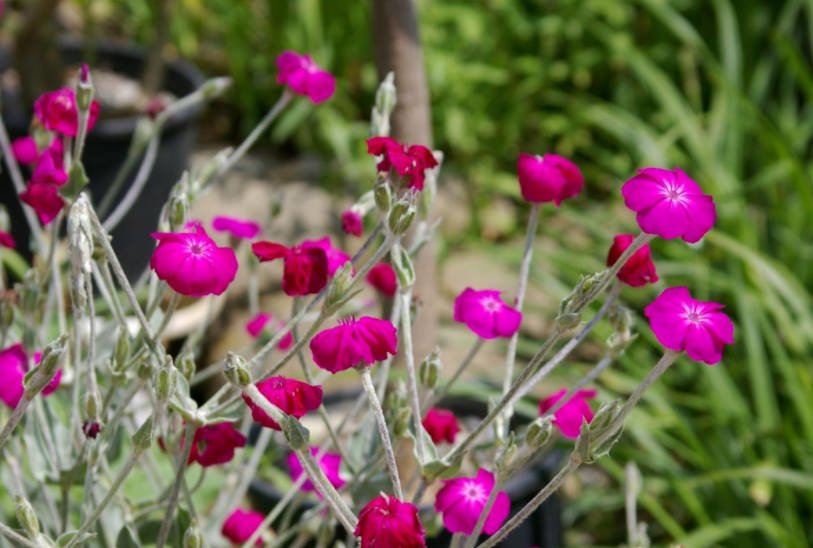
Lychnis coronaria
At first glance, it is somewhat clumsy: up to 1 m (3.3 ft) high, with rare shoots covered with whitish pubescence. But when bright crimson flowers bloom, it magically transforms. If you sow Lychnis coronaria in March, it will bloom in the first year. It fully demonstrates its beauty only in sunny areas with well-drained soils: rockeries, mixborders. It is harmonious in rural-style flower beds; it has long been cultivated in Europe and North America.
Lobelia speciosa
Lobelia species is a rare perennial of the same Lobeliaceae family with a height of 0.8-0.9 m (2.6-3 ft).
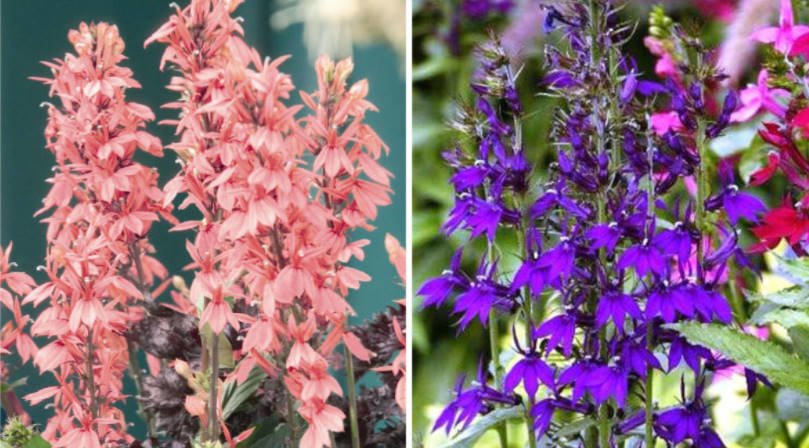
Lobelia speciosa
Gardeners are more familiar with its annual (and often basket-shaped) cousin – l-red (L. erinus). Hybrids of this type “Fan” and “Component”, sown at the end of January – February, bloom in July and will delight you with pink, bright red, purple, lilac, white flowers in August. Magnificent lobelia is difficult to maintain in winter, the only opportunity to admire it in a country house is during the period of rapid flowering. Prefers moist soils. It is good in flower beds of various styles.
Helleborus caucasicus
Helleborus caucasicus from the Ranunculaceae family in the south is a winter green perennial.
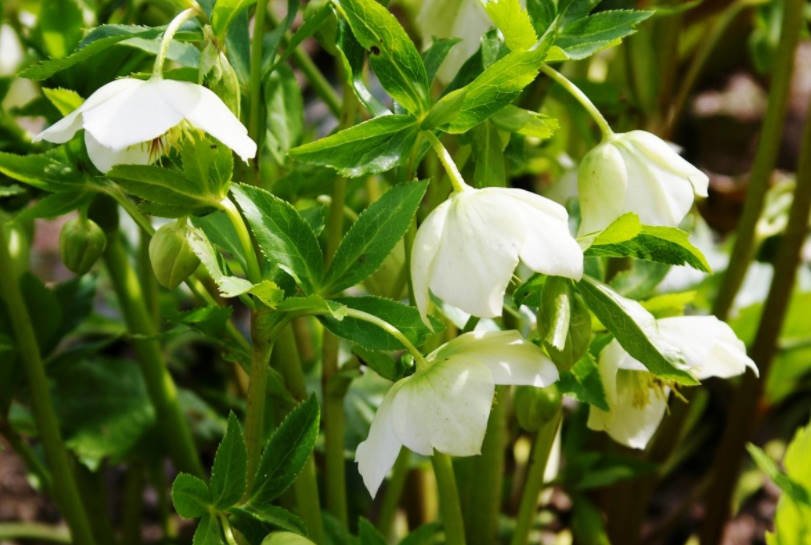
Helleborus caucasicus
Propagated in spring (after flowering) by parts of rhizomes. Like most members of the Ranunculaceae family, they are poisonous, so wear gloves when handling them.
Euphorbia rigida
Euphorbia rigida is a sunny representative of the Euphorbiaceae family of the same name with a height of up to 50 cm (1.6 ft) . With a free landing, it is the same space (and sometimes more) wider.
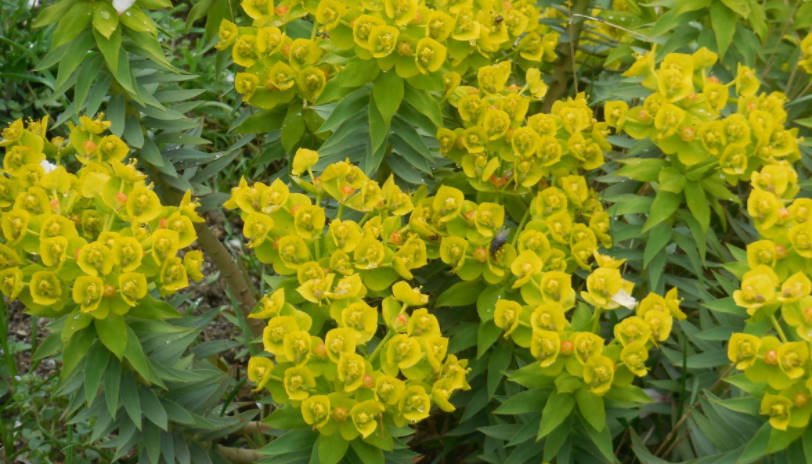
Euphorbia rigida
Effective early (in the south – from February) flowering requires sunny places with well-drained soils, luxurious carbonate plots. Pronounced flowering occurs during vegetative reproduction (division) in the spring, after flowering. Work with gloves: the plant is poisonous.
Leucanthemum maximum
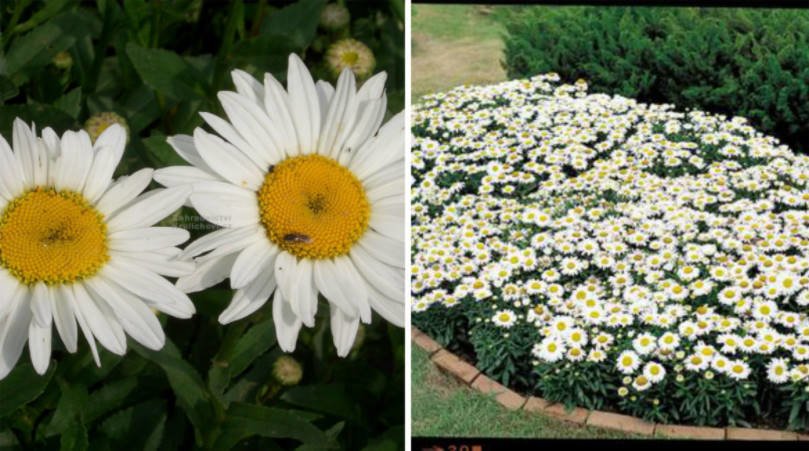
Leucanthemum maximum grade’ Snow Lady’, flowering close-up
This dwarf variety reaches 25 cm (9.8 in) in height. Inflorescences-baskets are large, up to 17 cm (6.7 in) in diameter! Blooms profusely.
Pagoda barbatus
Weather barbatus is a wonderful perennial plant.

Pagoda barbatus
It also blooms in the first year of life if it is grown through seedlings (planting in March-April). It grows and blooms better in full sun, tolerates partial shade well. Likes loose, well-drained, moist soil.
Arabis caucasica
The Caucasian arabis from the family of Hawk moth is a Mediterranean snow-white beauty that will shine in the most shaded places of the country in early spring.
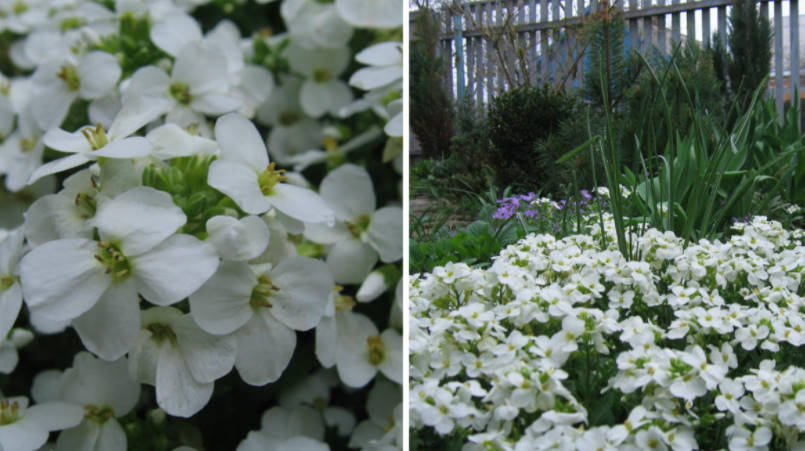
Arabis caucasica
It thrives in open sunny places with well-drained calcareous soils, sometimes suffers from high humidity of surface air, especially in winter.
Viola odorata
Viola odorata from the same family of Violets is a beautiful evergreen groundcover plant.

Viola odorata close up
Blooms luxuriantly in early spring (in the south – in March) on semi-shaded areas on drained soils.
How to grow Express perennials
- All express perennials are grown through seedlings when sown from February to March.
- They are demanding of the soil, which should be: fertile, loose, drained, well structured.
- Regular fertilizing is necessary, since without them it will not be possible for the plant to develop quickly, bloom and prepare for winter in a short period of time.
- Mandatory weeding, loosening of the soil, watering (especially in hot and dry summers).
- When growing express perennials, it does not do without preventive treatments (and in fact – fighting) with diseases and pests.
And what perennials did you have blooming in your garden last season?

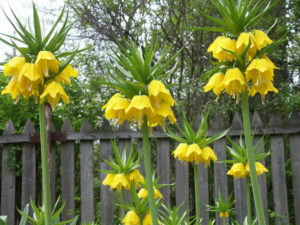
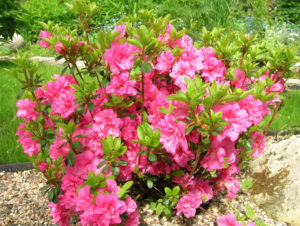

Leave a Reply